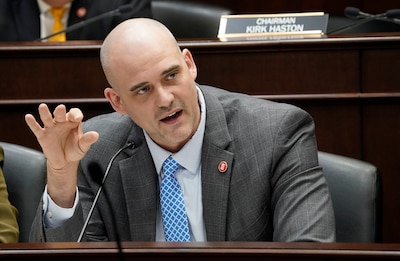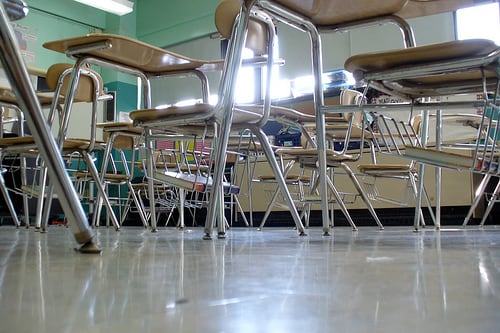A legislative proposal that could have led to larger class sizes in Tennessee died Tuesday in its first vote in the House.
The bill, which easily passed out of the full Senate earlier this month, would have eliminated the state’s average class size mandates and had appeared to have sufficient support for passage in the House’s K-12 subcommittee.
But Chairman Kirk Haston, a Lobelville Republican who works for Perry County Schools, declared the measure had failed on a close voice vote following spirited debate.

The bill’s abrupt ending means Tennessee will retain required classroom average sizes that essentially set the state’s goal for districts and charter schools to follow: 20 students per classroom for kindergarten through third grade, 25 for grades 4-6, and 30 for grades 7-12.
The state also mandates class size maximums at 25 students in kindergarten through third grade, 30 students in grades 4-6, and 35 students in grades 7-12.
Sponsors sought more staffing flexibility at local level
The bill was sponsored by Sen. Jon Lundberg of Bristol and Rep. Debra Moody of Covington, who argued the change would give school leaders more flexibility when staffing their classrooms. Both Republicans chair education committees in their chambers, giving extra weight to their proposal.
Their original bill would have ditched maximum class size requirements. But after lawmakers received angry feedback from a significant number of constituents about that idea, the sponsors softened the measure to eliminate only average class size mandates.
Critics argued, however, that both mandates are valuable to keep the state’s class sizes in check.
“Our concern is, once we eliminate the average, that it will be an evitable drift toward larger class sizes,” said Jim Wrye, representing teachers with the Tennessee Education Association. “We’ve been supporters of keeping the averages as a good benchmark.”
Tennessee is one of the few states with requirements in place both for classroom maximums and classroom averages. And some school districts already receive waivers from the state for those mandates.
Lundberg had argued that, while his goal wasn’t to create larger classes, school leaders need more leeway in certain cases, such as when teachers have aides to help them manage their classrooms. And Moody framed the proposal as a “local control” issue.
Several House Republicans agreed.
“I trust our (districts) and our principals to make the decisions on how large a class size they put with their teachers,” said Rep. Chris Hurt, a Republican from Halls. “I trust them that they’re not going to overload teachers.”
But the bill also got bipartisan pushback.
Rep. Sam McKenzie, a Knoxville Democrat, predicted that maximum class sizes would quickly become the norm under the legislation. And Rep. Bryan Richey, a Republican from Maryville, said the change seems counterproductive at a time when Tennessee is working to improve its third-grade literacy rate, as well as to recruit and retain effective teachers.
“I love local control,” Richey said, “but I think there are some things where we need a ceiling in place so we’re not going to have bad actors or bad decisions being made that negatively affect our students.”
Research is mixed on impact of smaller classes
Smaller class sizes are very popular with teachers, who maintain they can significantly boost learning with fewer students in their classrooms. However, keeping classes small also means that schools have to keep pace by hiring more teachers and building more classrooms.
Does class size matter for students’ academic performance? Research is mixed.
Chalkbeat’s 2022 analysis of numerous national studies showed that students often do better in smaller classes. But there’s no consensus on exactly how much better, and it’s an open question whether it’s the best use of funding to have fewer students per classroom.
The most famous and rigorous study of class size reduction took place in Tennessee beginning in 1985, when some kindergarten students were randomly assigned to unusually small classes through third grade. Test scores in the classes of 13 to 17 students quickly surpassed scores in the larger classes of 22 to 25. Those gains persisted for years, and the students also were more likely to attend and graduate from college.
Marta Aldrich is a senior correspondent and covers the statehouse for Chalkbeat Tennessee. Contact her at maldrich@chalkbeat.org.








